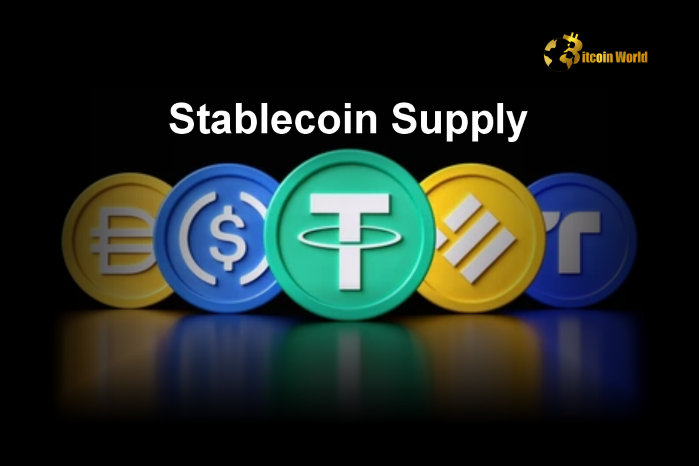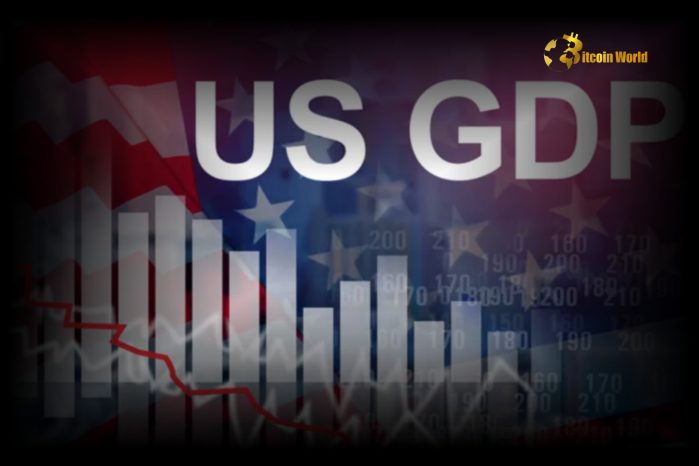
The post PENGU Down 11% in 24 Hours. Time to Switch to PEPETO? appeared first on Coinpedia Fintech News PENGU crypto has seen a steep decline reporting an 11% drop in the past 24 hours. The token is seeing investors scrambling to keep anything holding, fears over its viability. With the memecoin market constantly shifting, many traders are now looking toward Pepeto as a potential alternative for better returns. Pepeto: The Rising Contender in the Memecoin Market As PENGU struggles, #Pepeto is gaining attention with a structured approach that prioritizes longevity and utility. Unlike traditional memecoins that rely solely on hype, Pepeto integrates advanced features to enhance sustainability. Investors are increasingly recognizing Pepeto’s potential as it positions itself for mainstream adoption in 2025. 1. Staking Mechanism for Passive Income Pepeto offers an attractive staking model that allows holders to earn rewards, encouraging long-term participation. This feature helps stabilize the token’s value by reducing excessive sell-offs and ensuring continued engagement within the ecosystem. 2. Cross-Chain Compatibility With a powerful bridge that facilitates seamless asset transfers across different blockchain networks, #Pepeto fosters interoperability. This feature ensures liquidity and easy transactions, providing users with greater flexibility compared to other memecoins. 3. PepetoSwap: A Dedicated Meme Token Exchange PepetoSwap intends to streamline the memecoin market by creating a meme token exchange specifically for memes. This one distinguishes itself from competitors without dedicated trading infrastructure guaranteeing the safety of the trade, scalability, and efficiency. A New Year’s Message from the God of Frogs As the New Year begins, the God of Frogs, Pepeto Himself, shares a message of triumph and faith for the loyal Pepeto Army: The Plan Unfolds: The roadmap progresses flawlessly, as foretold. Every milestone has been achieved, and the… pic.twitter.com/zCmy1bTRQY — Pepeto (@Pepetocoin) January 1, 2025 PENGU’s Price Plunge and Market Impact PENGU’s decline comes after a monumental airdrop event on December 17, 2024, where over $1.5 billion worth of tokens were distributed to Pudgy Penguins holders and Ethereum (ETH) and Solana (SOL) users. Although PENGU has had an excellent launch, the token is currently trading at $0.015323 and is down 5.28% in the last day. Investors are looking for a stable market in a volatile one with weakening sentiment. Pepeto’s Technological Edge One unique feature of #Pepeto is that it places an emphasis on Technology and Optimization which are usually absent from past memecoin projects. Through leveraging blockchain features, Pepeto equips security, scalability, and transparency, no premiums, and minimizing volatility through price manipulation. This approach eases the risks that have plagued past memecoins, ensuring a more stable ecosystem. Presale Progress and Exchange Listings Pepeto’s presale phase is generating significant interest, with over $4.1 million raised so far, approaching its target of $4.19 million. Additionally, the project is set to list on five major exchanges, increasing visibility and liquidity. These strategic moves aim to establish Pepeto as a dominant player in the memecoin space. ABOUT PEPETO Pepeto is a cutting-edge cryptocurrency project blending the playful spirit of memecoins with a powerful utility-driven ecosystem. It features a zero-fee exchange, a cross-chain bridge for seamless swaps, and staking rewards designed to support the next generation of tokens. Media Links: X: https://x.com/Pepetocoin TG: https://t.me/pepeto_channel IG: https://www.instagram.com/pepetocoin/ YouTube: https://www.youtube.com/@Pepetocoin/ Contact Information: Contact: TokenWire Team Email: contact@tokenwire.io
coinpedia
You can visit the page to read the article.
Source: coinpedia
Disclaimer: The opinion expressed here is not investment advice – it is provided for informational purposes only. It does not necessarily reflect the opinion of BitMaden. Every investment and all trading involves risk, so you should always perform your own research prior to making decisions. We do not recommend investing money you cannot afford to lose.
Stablecoin Supply Exceeds 1% of U.S. Money Supply in Q4 2024

The total supply of dollar-backed stablecoins has surpassed 1% of the U.S. money supply , reaching $192 billion in circulation by Q4 2024 , according to former Messari analyst Ryan Watkins . Watkins shared on X (formerly Twitter) that this milestone highlights the rapid expansion of stablecoins in the financial system , predicting that they could soon reach 10% of the U.S. money supply . “We’re well off to the races,” said Watkins, emphasizing stablecoins’ growing role in global finance and digital transactions . Stablecoins’ Growing Role in the Financial System Stablecoins, such as USDT, USDC, and DAI , are increasingly used for payments, remittances, and decentralized finance (DeFi) , positioning them as a key component of digital economies . Why Stablecoin Adoption is Surging: Regulatory Clarity – Governments are moving toward clearer stablecoin regulations , boosting confidence. Mainstream Integration – More businesses and institutions are using stablecoins for transactions. Growth in Crypto & DeFi – Stablecoins remain essential for liquidity, trading, and cross-border payments . Macroeconomic Factors – Investors see stablecoins as a hedge against inflation and banking instability . With stablecoins exceeding 1% of U.S. money supply , their financial influence is rapidly increasing . Could Stablecoins Reach 10% of U.S. Money Supply? Ryan Watkins believes that stablecoins will continue growing rapidly , potentially reaching 10% of the U.S. money supply in the coming years. Key Factors That Could Drive Further Growth: Wider Institutional Adoption – More banks and payment networks integrating stablecoins . Global Demand for Dollar-Based Assets – Emerging markets using stablecoins for financial stability . Central Bank Digital Currency (CBDC) Uncertainty – Private stablecoins filling the gap before CBDCs roll out . If this trend continues , stablecoins could reshape traditional finance and digital transactions . What’s Next for Stablecoins? More Regulatory Developments – Governments may introduce new frameworks to oversee stablecoin issuers . Further Integration with Banks & Fintech – Traditional finance is increasingly adopting stablecoin technology . Stablecoin Market Cap Growth – As demand rises, stablecoins may soon overtake traditional cash transactions . Stablecoins are on track to becoming a major force in the financial system , potentially redefining how money moves globally . FAQs How much is the stablecoin supply in Q4 2024? The total stablecoin supply reached $192 billion , surpassing 1% of the U.S. money supply . Which stablecoins dominate the market? USDT, USDC, and DAI are among the most widely used dollar-backed stablecoins . Could stablecoins reach 10% of the U.S. money supply? Yes, analysts predict continued rapid adoption , especially with institutional and fintech integrations . Why are stablecoins growing so fast? Regulatory clarity, DeFi expansion, cross-border payments, and institutional adoption are driving growth. Will stablecoins replace traditional money? While stablecoins are gaining traction, central banks may introduce digital currencies (CBDCs) to compete . Conclusion The stablecoin market has hit a historic milestone , exceeding 1% of the U.S. money supply with $192 billion in circulation . With financial institutions, businesses, and global markets adopting stablecoins , analysts predict continued expansion —potentially reaching 10% of the money supply in the near future . Stablecoins are no longer just a crypto innovation —they are becoming a fundamental part of the financial system . To learn more about the innovative startups shaping the future of the crypto industry, explore our article on latest news , where we delve into the most promising ventures and their potential to disrupt traditional industries. coinpedia

U.S. GDP Grows 2.3% in Q4, Missing Expectations
The U.S. economy grew at an annualized rate of 2.3% in Q4 2024 , according to the Bureau of Economic Analysis (BEA) . This fell short of market expectations of 2.7% , signaling slower-than-anticipated economic expansion . This data represents the advance estimate , with preliminary and final reports expected in the coming weeks. Why Did U.S. GDP Growth Miss Forecasts? Weaker Consumer Spending – Slower holiday retail sales and high-interest rates impacted spending . Declining Business Investments – Companies scaled back on capital expenditures amid economic uncertainty . Global Economic Headwinds – Trade disruptions and weaker international demand affected exports . Despite moderate growth , the U.S. economy expanded at a slower pace than economists predicted . Breakdown of Q4 2024 U.S. GDP Report Key Components of GDP Growth: Consumer Spending: Modest gains, but below previous quarters . Government Spending: Provided a mild boost to overall GDP . Business Investments: Showed slower expansion amid economic caution . Exports & Trade Balance: Affected by global economic trends and trade policies . The full GDP breakdown will be detailed in the preliminary and final estimates . What Does This Mean for Markets & the Fed? Stock Market Reaction: Slower GDP growth may weigh on equities , but lower inflation risks could support rate cuts . Federal Reserve Policy: The Fed may adjust its interest rate outlook depending on future economic data. Inflation & Consumer Spending: Moderation in GDP growth could ease inflation concerns , influencing Fed decisions. The next preliminary GDP estimate will offer a clearer picture of economic trends . FAQs What was the U.S. GDP growth rate for Q4 2024? The economy grew 2.3% in Q4 2024 , missing the 2.7% market forecast . Why did GDP growth miss expectations? Weaker consumer spending, slower business investment, and global headwinds contributed to the slowdown. Will the GDP estimate change? Yes. The advance estimate is the first of three releases , with preliminary and final reports to follow . How will this affect Federal Reserve policy? Slower growth could influence the Fed’s decision on interest rates , depending on inflation trends . When is the next GDP estimate? The preliminary GDP estimate will be released in the coming weeks , providing a more refined outlook . Conclusion The U.S. economy expanded by 2.3% in Q4 2024 , but missed the expected 2.7% growth rate , reflecting a slowdown in consumer spending and business investment . As markets digest this data , focus will shift to the Federal Reserve’s response, inflation trends, and upcoming GDP revisions . Investors should monitor economic indicators and Fed policy updates in the coming weeks. To learn more about key financial updates and market trends, explore our article on latest economic news , where we break down crucial developments shaping the economy. coinpedia











